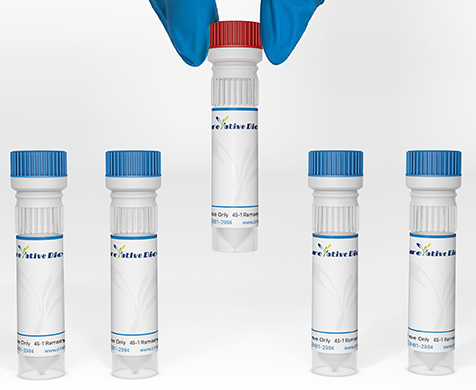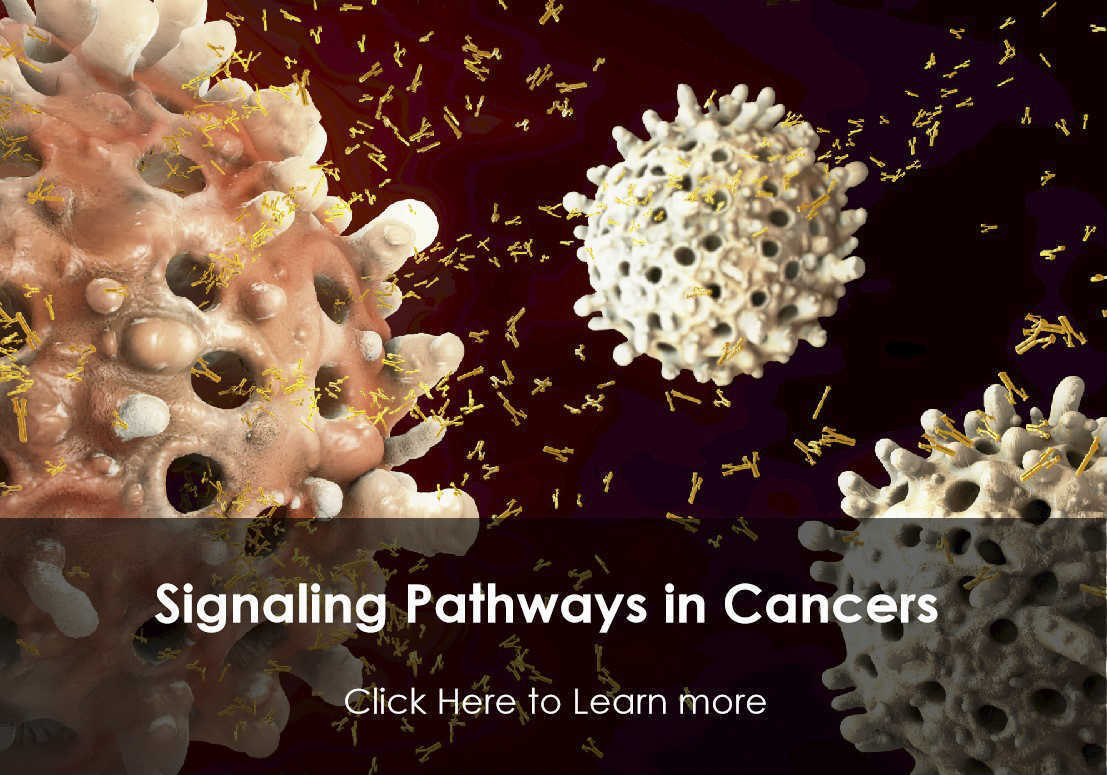RNF113A
This intronless gene encodes a protein which contains a C3H1-type zinc finger domain and a C3HC4 Ring-type (Really Interesting New Gene-type) zinc finger domain. The Ring-type zinc finger domain is identified in various tumor suppressors, DNA repair genes and cytokine receptor-associated molecules, and is probably involved in mediating protein-protein interactions. [provided by RefSeq, May 2010]
Full Name
ring finger protein 113A
Function
Required for pre-mRNA splicing as component of the spliceosome (PubMed:29361316, PubMed:29360106).
E3 ubiquitin-protein ligase that catalyzes the transfer of ubiquitin onto target proteins (PubMed:28978524, PubMed:29144457).
Catalyzes polyubiquitination of SNRNP200/BRR2 with non-canonical 'Lys-63'-linked polyubiquitin chains (PubMed:29144457).
Plays a role in DNA repair via its role in the synthesis of 'Lys-63'-linked polyubiquitin chains that recruit ALKBH3 and the ASCC complex to sites of DNA damage by alkylating agents (PubMed:29144457).
Ubiquitinates CXCR4, leading to its degradation, and thereby contributes to the termination of CXCR4 signaling (PubMed:28978524).
E3 ubiquitin-protein ligase that catalyzes the transfer of ubiquitin onto target proteins (PubMed:28978524, PubMed:29144457).
Catalyzes polyubiquitination of SNRNP200/BRR2 with non-canonical 'Lys-63'-linked polyubiquitin chains (PubMed:29144457).
Plays a role in DNA repair via its role in the synthesis of 'Lys-63'-linked polyubiquitin chains that recruit ALKBH3 and the ASCC complex to sites of DNA damage by alkylating agents (PubMed:29144457).
Ubiquitinates CXCR4, leading to its degradation, and thereby contributes to the termination of CXCR4 signaling (PubMed:28978524).
Biological Process
Biological Process DNA repairIEA:UniProtKB-KW
Biological Process isopeptide cross-linking via N6-glycyl-L-lysineManual Assertion Based On ExperimentIMP:UniProtKB
Biological Process mRNA splicing, via spliceosomeManual Assertion Based On ExperimentIDA:UniProtKB
Biological Process negative regulation of chemokine-mediated signaling pathwayManual Assertion Based On ExperimentIMP:UniProtKB
Biological Process protein ubiquitinationManual Assertion Based On ExperimentIMP:UniProtKB
Biological Process snoRNA splicingManual Assertion Based On ExperimentIBA:GO_Central
Biological Process isopeptide cross-linking via N6-glycyl-L-lysineManual Assertion Based On ExperimentIMP:UniProtKB
Biological Process mRNA splicing, via spliceosomeManual Assertion Based On ExperimentIDA:UniProtKB
Biological Process negative regulation of chemokine-mediated signaling pathwayManual Assertion Based On ExperimentIMP:UniProtKB
Biological Process protein ubiquitinationManual Assertion Based On ExperimentIMP:UniProtKB
Biological Process snoRNA splicingManual Assertion Based On ExperimentIBA:GO_Central
Cellular Location
Nucleus
Nucleus speckle
Colocalizes with ASCC2 in nuclear foci after DNA damage by alkylating agents. In the absence of DNA damage, colocalizes with the spliceosome components SNRNP200/BRR2 and PRPF8 in nuclear speckles.
Nucleus speckle
Colocalizes with ASCC2 in nuclear foci after DNA damage by alkylating agents. In the absence of DNA damage, colocalizes with the spliceosome components SNRNP200/BRR2 and PRPF8 in nuclear speckles.
Involvement in disease
Trichothiodystrophy 5, non-photosensitive (TTD5):
An X-linked form of trichothiodystrophy, a disease characterized by sulfur-deficient brittle hair and multisystem variable abnormalities. The spectrum of clinical features varies from mild disease with only hair involvement to severe disease with cutaneous, neurologic and profound developmental defects. Ichthyosis, intellectual and developmental disabilities, decreased fertility, abnormal characteristics at birth, ocular abnormalities, short stature, and infections are common manifestations. There are both photosensitive and non-photosensitive forms of the disorder. TTD5 features include microcephaly, profound intellectual disability, sparse brittle hair, aged appearance, short stature, facial dysmorphism, seizures, an immunoglobulin deficiency, multiple endocrine abnormalities, cerebellar hypoplasia and partial absence of the corpus callosum, in the absence of cellular photosensitivity and ichthyosis.
An X-linked form of trichothiodystrophy, a disease characterized by sulfur-deficient brittle hair and multisystem variable abnormalities. The spectrum of clinical features varies from mild disease with only hair involvement to severe disease with cutaneous, neurologic and profound developmental defects. Ichthyosis, intellectual and developmental disabilities, decreased fertility, abnormal characteristics at birth, ocular abnormalities, short stature, and infections are common manifestations. There are both photosensitive and non-photosensitive forms of the disorder. TTD5 features include microcephaly, profound intellectual disability, sparse brittle hair, aged appearance, short stature, facial dysmorphism, seizures, an immunoglobulin deficiency, multiple endocrine abnormalities, cerebellar hypoplasia and partial absence of the corpus callosum, in the absence of cellular photosensitivity and ichthyosis.
View more
Anti-RNF113A antibodies
+ Filters
 Loading...
Loading...
Target: RNF113A
Host: Mouse
Antibody Isotype: IgG2a, κ
Specificity: Human
Clone: 3F3
Application*: E, WB
More Infomation
Hot products 
-
Mouse Anti-CAT Recombinant Antibody (724810) (CBMAB-C8431-LY)

-
Mouse Anti-CCT6A/B Recombinant Antibody (CBXC-0168) (CBMAB-C5570-CQ)

-
Mouse Anti-DDC Recombinant Antibody (8E8) (CBMAB-0992-YC)

-
Mouse Anti-CCS Recombinant Antibody (CBFYC-1093) (CBMAB-C1150-FY)

-
Mouse Anti-BACE1 Recombinant Antibody (CBLNB-121) (CBMAB-1180-CN)

-
Mouse Anti-ACTN4 Recombinant Antibody (V2-6075) (CBMAB-0020CQ)

-
Mouse Anti-AOC3 Recombinant Antibody (CBYY-0014) (CBMAB-0014-YY)

-
Mouse Anti-BRCA2 Recombinant Antibody (CBYY-0790) (CBMAB-0793-YY)

-
Mouse Anti-CEMIP Recombinant Antibody (3C12) (CBMAB-K0296-LY)

-
Rat Anti-ADAM10 Recombinant Antibody (V2-179741) (CBMAB-A1103-YC)

-
Mouse Anti-BHMT Recombinant Antibody (CBYY-0547) (CBMAB-0550-YY)

-
Mouse Anti-CD247 Recombinant Antibody (6B10.2) (CBMAB-C1583-YY)

-
Mouse Anti-CDK7 Recombinant Antibody (CBYY-C1783) (CBMAB-C3221-YY)

-
Mouse Anti-DMPK Recombinant Antibody (CBYCD-324) (CBMAB-D1200-YC)

-
Mouse Anti-AKT1 Recombinant Antibody (V2-180546) (CBMAB-A2070-YC)

-
Mouse Anti-ADRB2 Recombinant Antibody (V2-180026) (CBMAB-A1420-YC)

-
Mouse Anti-DLL4 Recombinant Antibody (D1090) (CBMAB-D1090-YC)

-
Mouse Anti-ENO2 Recombinant Antibody (85F11) (CBMAB-0276CQ)

-
Rat Anti-EMCN Recombinant Antibody (28) (CBMAB-E0280-FY)

-
Mouse Anti-APOA1 Monoclonal Antibody (CBFYR0637) (CBMAB-R0637-FY)

For Research Use Only. Not For Clinical Use.
(P): Predicted
* Abbreviations
- AActivation
- AGAgonist
- APApoptosis
- BBlocking
- BABioassay
- BIBioimaging
- CImmunohistochemistry-Frozen Sections
- CIChromatin Immunoprecipitation
- CTCytotoxicity
- CSCostimulation
- DDepletion
- DBDot Blot
- EELISA
- ECELISA(Cap)
- EDELISA(Det)
- ESELISpot
- EMElectron Microscopy
- FFlow Cytometry
- FNFunction Assay
- GSGel Supershift
- IInhibition
- IAEnzyme Immunoassay
- ICImmunocytochemistry
- IDImmunodiffusion
- IEImmunoelectrophoresis
- IFImmunofluorescence
- IGImmunochromatography
- IHImmunohistochemistry
- IMImmunomicroscopy
- IOImmunoassay
- IPImmunoprecipitation
- ISIntracellular Staining for Flow Cytometry
- LALuminex Assay
- LFLateral Flow Immunoassay
- MMicroarray
- MCMass Cytometry/CyTOF
- MDMeDIP
- MSElectrophoretic Mobility Shift Assay
- NNeutralization
- PImmunohistologyp-Paraffin Sections
- PAPeptide Array
- PEPeptide ELISA
- PLProximity Ligation Assay
- RRadioimmunoassay
- SStimulation
- SESandwich ELISA
- SHIn situ hybridization
- TCTissue Culture
- WBWestern Blot

Online Inquiry







